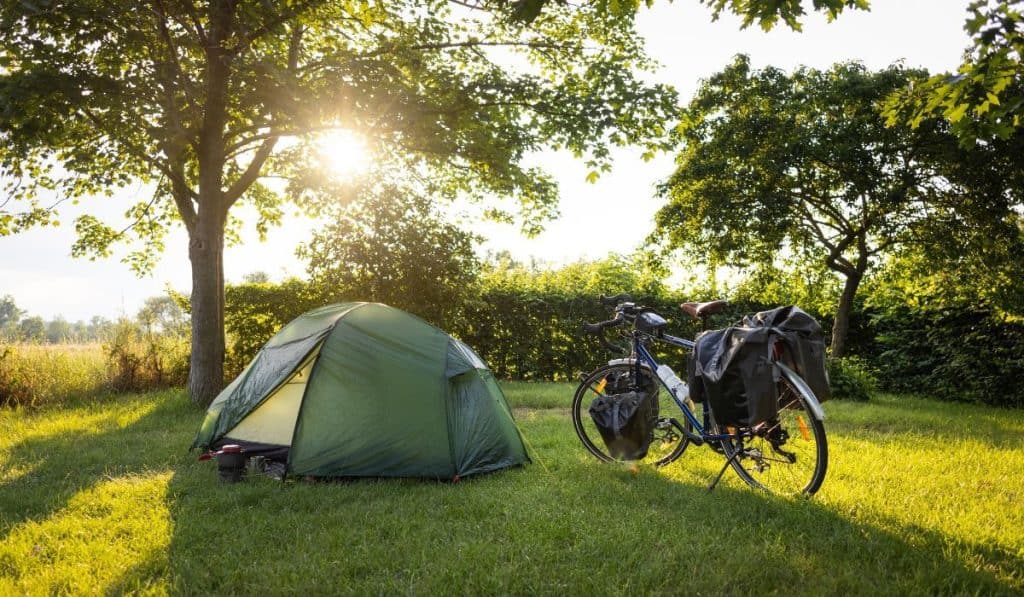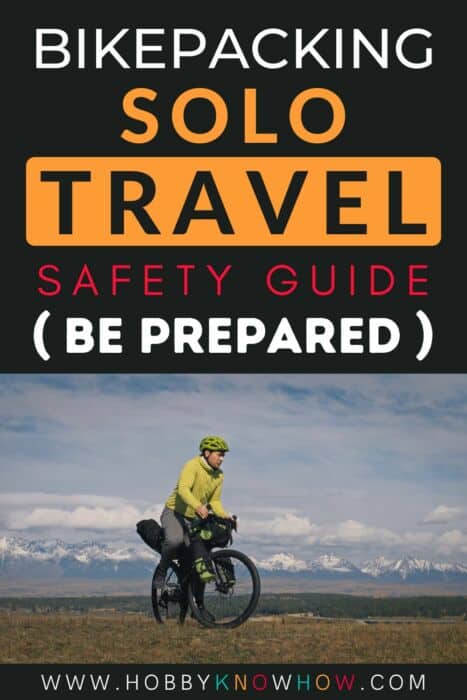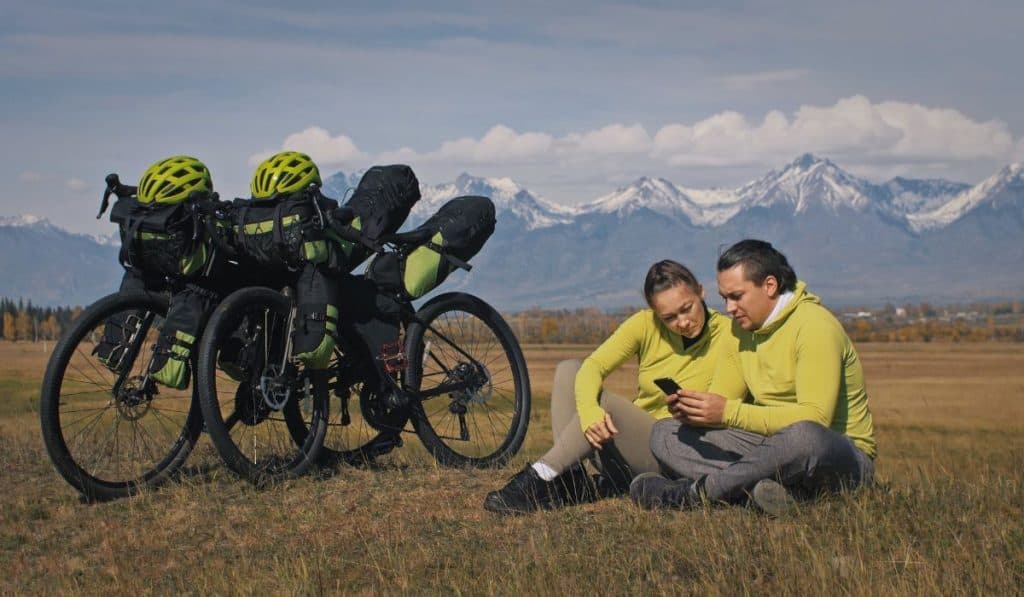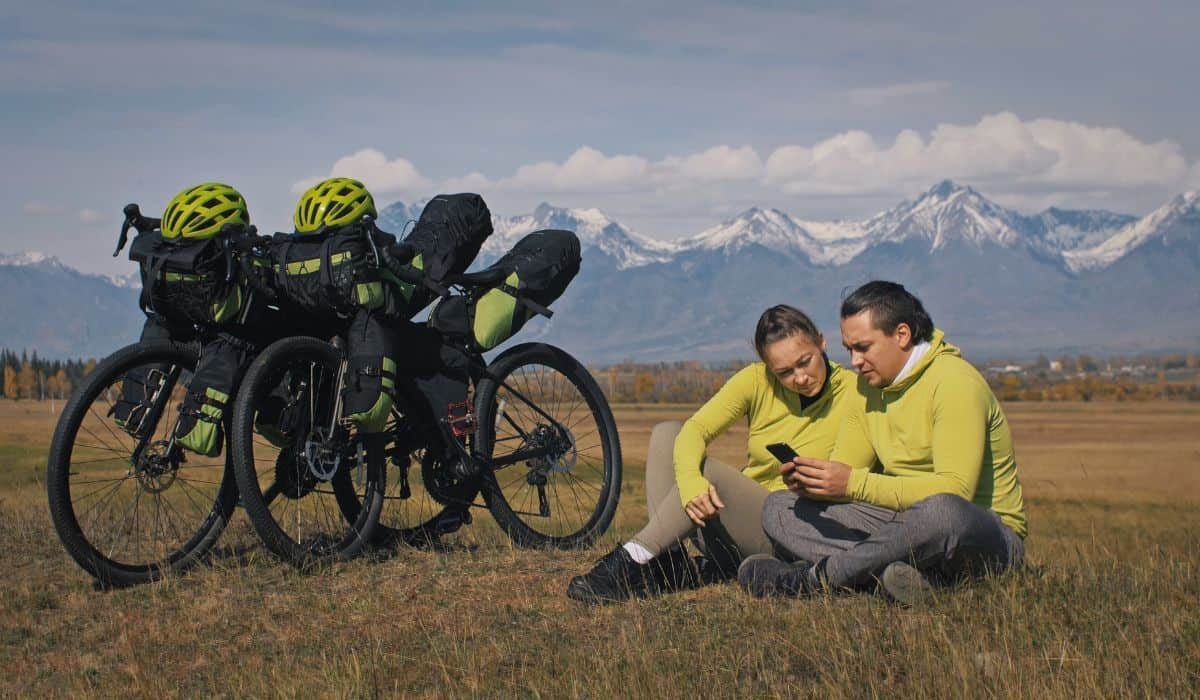When bikepacking solo, there won’t be others to watch your back. This means that you’ll need to be even smarter. Prepare appropriately by learning about potential destinations and by checking the weather.
Make sure to bring bike repair gear and a first aid kit. Learn more below!
Leave An Itinerary With Someone You Trust
Plant out every part of your trip, including not just your campground, but also any pit stops. Then, leave this itinerary with a couple of trusted family members. Try to follow this schedule at least loosely, so that if you end up getting lost, people know where to look.
Inspect Your Bike Before You Set Out
When bikes aren’t maintained properly, they can break. Sometimes, while you’re on them (every biker’s worst nightmare). Fortunately, this can be prevented with basic upkeep, i.e. lubricating the gears, tightening the breaks, etc. Before you set out, give your bike a thorough look-over!
Read our guide for tool kits and repair kits for bikepackers here.

Check the Weather
One of the main things that contribute to bike injuries is the weather. Trails can become a lot less manageable when they’re wet and slippery. When planning your trip, make sure to always check the weather. Know what to plan for.
Learn First Aid and Bring a First Aid Kit
Whether bikepacking in a group or on your own, you never want to be without a first aid kit. This should include all of the staples, such as (but not limited to):
- Wraps (for knee or ankle twists)
- Gauze
- Medical tape
- Antibiotic ointment
- Rubbing alcohol
- Safety pins
- Benedryl
- Pain reliever (Ibuprofen, aspirin, etc.).
- Tweezers
- A variety of bandages (all sizes)
- An EpiPen (optional)
Read our first aid kit guide here
Trust Your Gut
This isn’t just a tip for a solo bikepacker: trust your gut. If a path doesn’t feel right, pass it by for one that seems safer. This goes for people and situations as well as places. If you aren’t comfortable, feel free to take off.
Consider a Satellite Communicator
A cellphone is a fine way to keep contact, except for when you’re outside of its signal. If you’re bikepacking off-road, or between cities, this might happen frequently.
This is fine if you’re just waiting to check updates, or perhaps make a post. In an emergency, however, it would be problematic and even dangerous to be unable to get in contact or call 911.
For this reason, you may wish to get a satellite communicator. This will allow you to send texts from anywhere that you can see the sky (so, unless you are in a cave system or some such).

Go Bikepacking Solo Near Home First
Before you try bikepacking cross-country, you can try some routes near home. This will give you some added security while you get used to going it on your own. If solo bikepacking really isn’t your thing, you can also head back.
Once you’re comfortable with things like navigation, first aid, repairs, and setting up camp solo, you can move on to places less familiar!
Research Places Before You Visit
Before traveling anywhere, it’s wise to do a bit of research on it. For instance, what’s the crime rate? Mugging? These are things you’ll want to know.
To start, you can take a look at the U.S. State Department’s travel advisory page, which designates areas by the level of safety. It’s usually best to stick to areas that are level 1 (but it’s your call).

Turn Your Location Sharing Off
Once again, this goes for anyone leaving town: turn your location sharing off. Or at the least, narrow its privacy down to people you know and trust.
Otherwise, seeing that you are a state away can signal to potential thieves that the house is empty (and unguarded). It’s just better not to take the unnecessary risk!
Walk Confidently
This goes for whether you are in the city, or the forest: walk confidently. This will make you look less like potential prey, whether to a mugger or a predator. Something as simple as this can go a long way to convincing them you’re not worth the trouble.
Walk with your back straight, and your chin up.
If something startles you, do your best not to cower. Let your nonchalant and fearless attitude help fend trouble off.
Bring Supplies for Bike Repair
If you’re biking on your own, you’ll need to depend on yourself for any necessary bike repair. This means that you need both the necessary know-how and the gear.
- Pliers
- Pump
- Multi-tool (with a chain breaker)
- Spare tubes
- Tire sealant
- Tire patch kit
- Superglue
- Tire lever
Start Out Easier Than You Normally Might

Perhaps you are used to some gnarly trails when you bike in a group or with a partner. The best bikers advise that your first time biking solo, you go a bit easier.
It’s good to first get used to doing the things bikepacking calls for yourself. That is, repairing your bike, setting up camp, etc. Many find this more tiring as they get used to it.
During this time, you might appreciate a less-arduous journey. Once you’ve got solo bikepacking down, you can tackle trips that are more difficult, however!
Know the Rules of the Road
Wherever you are biking, making sure you know the rules of the road. This is all the more important without someone else to watch your back!
Along with this, use bike paths as often as you can, give cars plenty of room in general, and don’t forget to signal, ever!
Pepper Spray is Smart
Pepper spray can be a great way to deflect attackers, ( Amazon link ) whether human or animal. When used properly, they can temporarily blind even a bear. In these sorts of situations, having some pepper spray on you can be a real-life-saver.
- TRUST THE PROFESSIONALS: SABRE is the #1 Pepper Spray brand trusted by police and consumers worldwide, including New York PD, Chicago PD, and U.S. Marshals; Made in the USA
- 2X STRONGER: 4 out 10 violent crimes involve alcohol use by the offender – our max strength Pepper Spray is strong enough to use against a goal oriented attacker under the influence of drugs or alcohol; Backed by our industry exclusive in-house HPLC lab
- 5X MORE PROTECTION: 42% of crimes are committed by multiple assailants – this 3-in-1 defense spray provides protection against multiple threats with 25 bursts delivered in a powerful stream from nozzle to the target’s eyes while decreasing wind blowback
Even if you never need to use it, better safe than sorry, right?
The best pepper sprays are military-grade, and some are sold specifically for use on bears, as well, if you are in bear country.
They are usually quite user-friendly, with just an unlock-and-press to spray, and the small bottle will easily slip into any pack. It’s a convenient, effective way to protect yourself.
You May Wish to Dress Gender-Neutral
If you’re a woman, it can be wise to dress ‘gender-neutral.’ This means avoiding stereotypical things that can make your gender apparent: bright pink shirts or shoes, that kind of silly stuff.
Of course, you don’t have to do this if you don’t feel like it. It’s just another way to go under the radar (some are more comfortable this way).
So, there you have it: some helpful tips to make your solo bikepacking trip safer, and to help it go smoother!
Product Guides
- Bikepacking Handlebar Bag (Top 5 Reviewed)
- Best Bikepacking Bags (Top 5 Reviewed)
- Bikepacking Cooking Gear
- Best Bikepacking Frame Bag (Top 5 Reviewed)
- Best Bikepacking Tents (Top 5 Tested and Reviewed)





